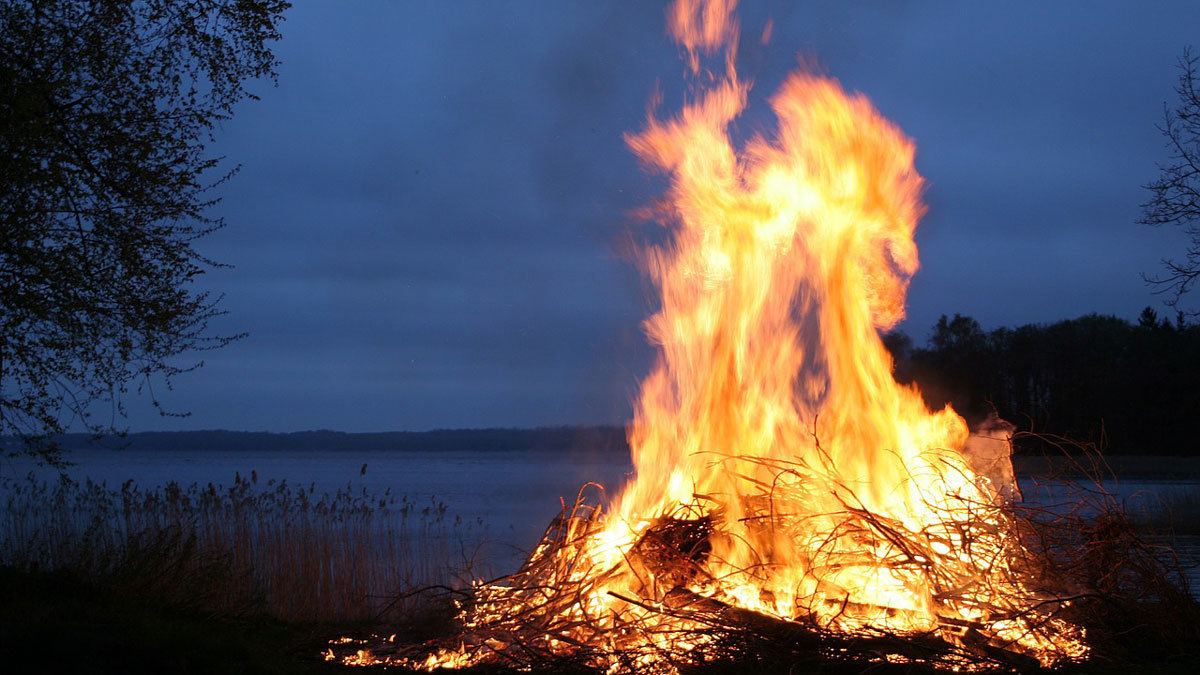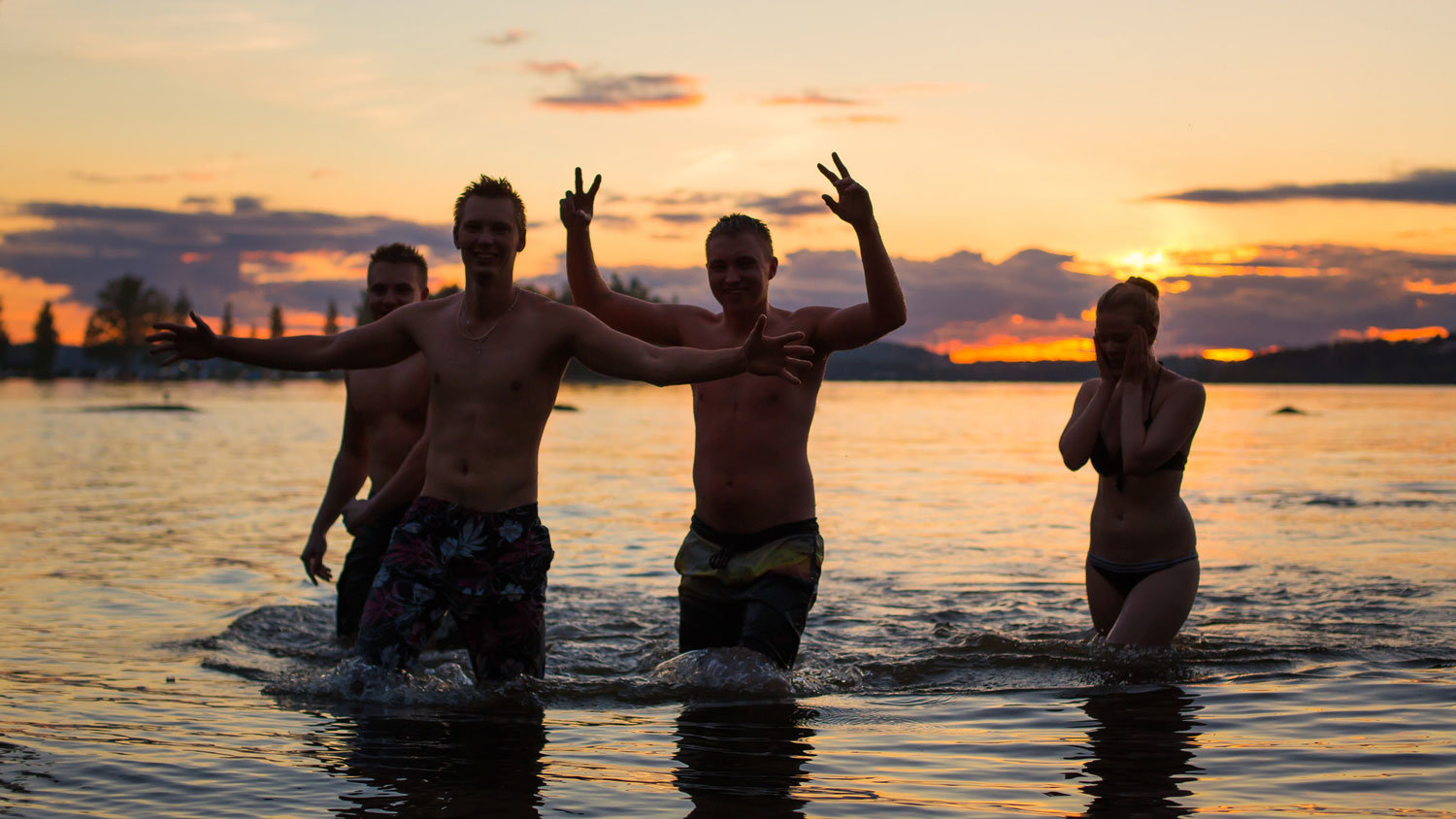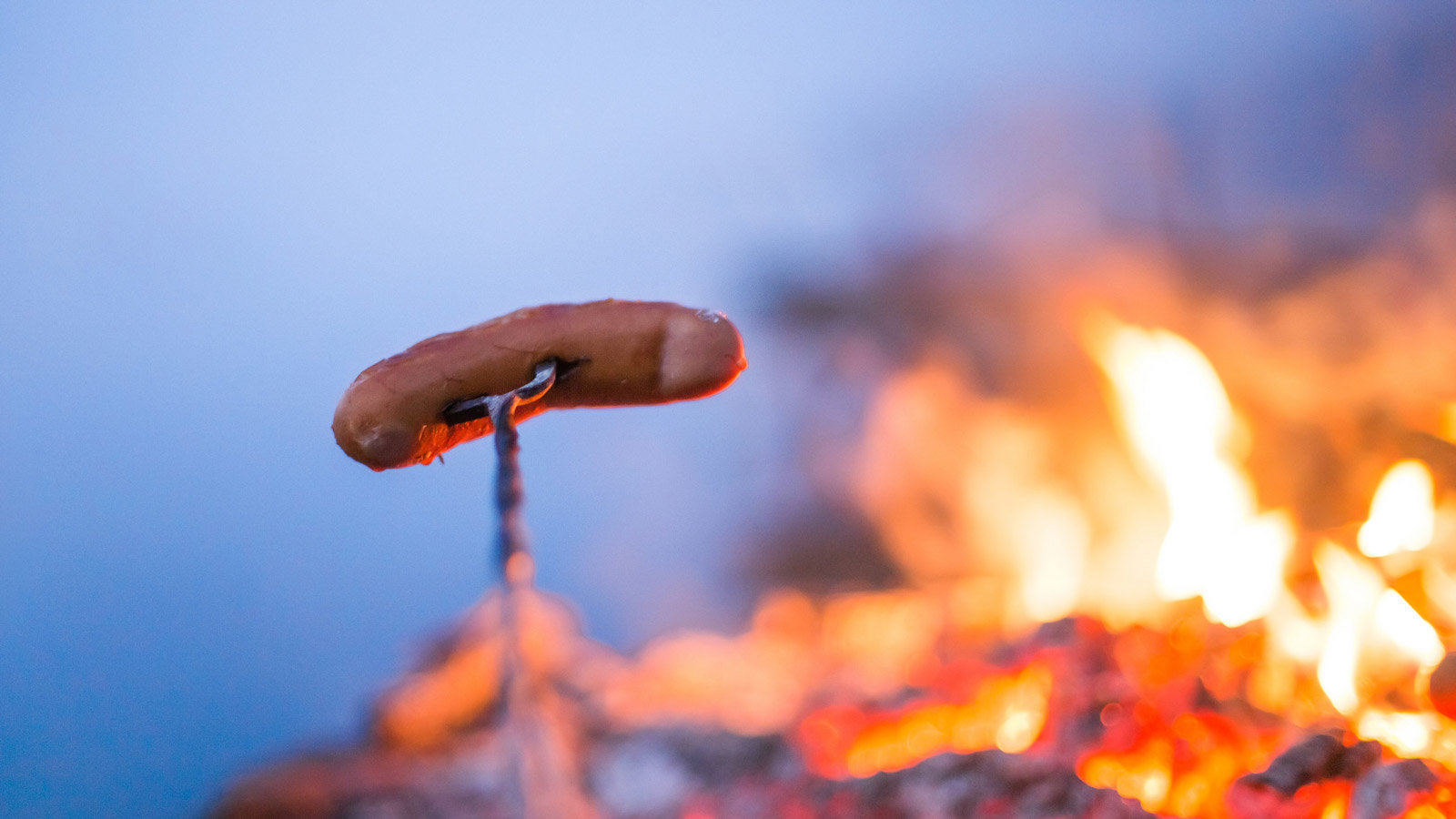Like many other celebrations in Nordic countries, Juhannus or Midsummer has its roots in pagan tradition, which, in this case, was a dedication to Ukko -the God of Weather/Thunder- when it first began, hundreds of years ago. This was done to appease the God, bring good crops and fertility to all of those whose livelihood depended on agriculture, for the incoming year.
This holiday -which is an official holiday and flag day in Finland- has many different names depending on which country is celebrating it, but in the land of a thousand lakes its called Juhannus.
This is not just a Finnish celebration though and Midsummer is also a big festivity in all Nordic countries, in Estonia and other Baltic states, Belarus, Russia, Poland, Bulgaria, Germany, Netherlands, and also observed by Unitarian Universalists, the Roman Catholic Church, Lutheran Churches, Anglican Communions and Neo-pagans.
They all might have different names for it, but they all commemorate this holiday and its significance, which symbolizes the beginning of astronomical summer (the start of the solstice), the ancient middle of summer and the nativity of Saint John the Baptist.
This is where the name Juhannus actually comes from. In 1316, in an attempt to convert pagans to Christianity and conflate the image of the God Ukko with that of a Christian Saint, the Roman Catholic Church decided to attribute the date to the Saint John the Baptist’s nativity, whose name would translate to Johannes, which in time turned into Juhannus, thus becoming the name by which the holiday is most known for today.

A mix of pagan and Christian traditions
Nowadays, because of all this, the festivity is a mixed celebration of pagan and Christian traditions that can be noticed by seeing people lighting up a bonfire or casting playful magical spells -like single girls gathering seven different wild flowers to later put under their pillows so they can see, in their dreams, who their future husbands are gonna be- but at the same time having church weddings, baptisms or confirmations on this day/weekend.
Juhannus used to be celebrated on every June 24th, but since 1955 it is always celebrated on a Saturday, between June 20th and June 26th, with Midsummer’s Eve being on every Friday before.
Traditionally, in Finland the celebrations are held in nature because when Juhannus first started it was believed that nature held special powers and magic and that is where spells made would be more effective.
This is why, to this day, the celebrations involve big bonfires (kokko), raising the Midsummer pole (mostly in the Swedish-speaking areas), feasting on different kinds of sausages (makkaras) and other grilled meat, fishing, boating, singing, dancing, playing, a lot of drinking, going to festivals, and of course, sauna, all done in forests by a lake or the sea.
It is also traditional for Finns to put birch tree branches (koivu) on both sides of the doors and gates to welcome visitors and to go to their lake cottage (möki) -away from the cities rush- to held these celebrations, relax and swim in the lake under the midnight sun. For this reason it is common for the big cities to look and be empty as most Finns and many foreigners are away in their summer cabins, whether they are privately owned or rented.
 A Midsummer celebration in Härmälä camping (Tampere). Photo: Laura Vanzo/Visit Tampere.
A Midsummer celebration in Härmälä camping (Tampere). Photo: Laura Vanzo/Visit Tampere.
Fire, a purifying force
The bonfires, in particular, have a special and vital role in this holiday because, as we previously mentioned, fire was used in almost all cultures across Europe in ancient times and people, then, viewed fire as a purifying and powerful force that would bring about luck in most, if not all, areas of life.
Although initially the bonfires were only customary of eastern Finland, in time this tradition spread across the country. The first and oldest written mention of Midsummer bonfires were dated in Turku in 1645.
When it comes to the Christian religious aspect of Juhannus, the celebrations involve processions, baptisms, services of worship, confirmations and church weddings which rise considerably in number during this time of year.
But no matter someone’s personal religious beliefs or nationality, if they live in Finland and want to enjoy this holiday -and in case they do not have a Möki, a chance to rent one or leave the big city-, there are still places where Juhannus can be celebrated. Virtually every Finnish city has its own Midsummer events planned and in the Helsinki area, the most common and sought after locations are the Island/Open Air Museum of Seurasaari, where a traditional type of celebration takes place, and the city center.
 Midsummer celebrations also involve tasting sausages (makkara) and other food delicacies. Photo: Laura Vanzo/Visit Tampere.
Midsummer celebrations also involve tasting sausages (makkara) and other food delicacies. Photo: Laura Vanzo/Visit Tampere.
Events for all ages
If one lives near the self-proclaimed (since 2004) Official Midsummer Town of Virrat, there are a number of events taking place for all ages. Another interesting ceremony is held in Kauhava, at the old air force school grounds, called the Lentäjien Juhannus Midsummer Air Show.
Most shops, restaurants and pretty much every businesses are closed on this weekend, or close around noon on Midsummer’s Eve. Public transportation is also hard to get during these days as there are fewer times and services, so it is advisable to check ahead of time which ones are available if one needs to travel or shop during Juhannus.
It is important as well to remember that during this Midsummer weekend the number of deaths usually rise as many people tend to binge drink and then either drown or get involved in a car, motorbike or boat accidents, so we advise to pay attention to your surroundings and drink responsibly.
Hyvää Juhannusta Kaikille!












